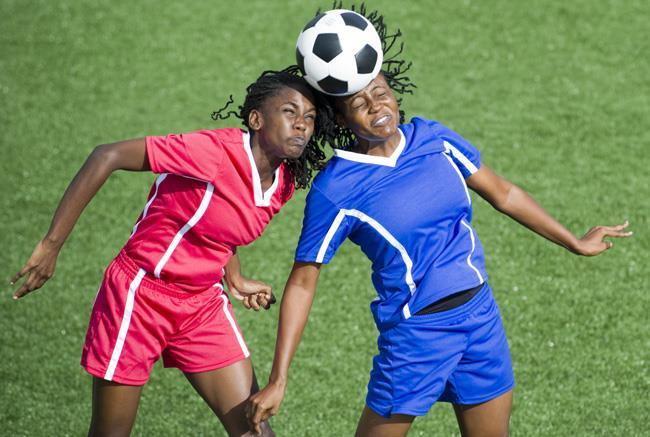Concussions have long been a pressing concern in the world of sports, but emerging research highlights unique risks and recovery challenges faced by female athletes. Cedars-Sinai, a leading medical institution, is shedding new light on this issue by offering tailored advice and strategies to help women protect themselves on the field. In this article, we explore the latest insights into concussions among female athletes and share expert tips from Cedars-Sinai to promote safer participation in sports.
Understanding Concussion Risks Unique to Female Athletes
Female athletes experience concussions at a notably higher rate than their male counterparts in comparable sports, a disparity that has attracted growing attention in sports medicine. Research attributes this difference to several physiological and biomechanical factors. For instance, women typically have less neck strength and smaller head mass, which can lead to increased head acceleration upon impact. Additionally, hormonal fluctuations related to the menstrual cycle may influence the brain’s susceptibility to injury and affect recovery time.
Understanding these unique risks is essential for creating tailored prevention strategies. Key considerations include:
- Customized neck strengthening exercises to enhance stability during high-impact activities.
- Monitoring symptoms throughout different hormonal phases to identify potential vulnerability periods.
- Educating coaches and trainers about the gender-specific presentation and reporting tendencies of concussions.
- Implementing proactive baseline testing that accounts for sex differences in brain function.
| Factor | Female Athlete Impact |
|---|---|
| Neck Strength | Lower, increases risk |
| Head Mass | Smaller, higher acceleration |
| Hormonal Cycles | May worsen symptoms |
| Symptom Reporting | More frequent, but varied |
Recognizing Early Symptoms and When to Seek Medical Help
Spotting the early signs of a concussion is crucial for female athletes who want to protect their long-term brain health. Common symptoms may include sudden headaches, dizziness, confusion, nausea, or even subtle changes such as difficulty concentrating and sensitivity to light or noise. It’s important to remember that symptoms can appear immediately or develop over several hours, making vigilant observation key. Female athletes should be encouraged to report any unusual feelings or physical complaints during or after play without fear of stigma or dismissal.
Immediate medical evaluation is essential if any of the following symptoms arise after a head impact:
- Loss of consciousness, even briefly
- Repeated vomiting
- Severe headache that worsens
- Confusion or inability to recognize people or places
- Unsteady walking or loss of coordination
| Symptom | Typical Onset | Urgency |
|---|---|---|
| Headache | Immediate or delayed | Moderate |
| Dizziness | Immediate | High |
| Confusion | Immediate | Urgent |
| Vomiting | Within hours | Urgent |
| Blurred Vision | Delayed | Moderate |
Effective Strategies for Prevention and Safe Return to Play
Prioritizing concussion prevention begins with comprehensive education and well-structured training programs tailored specifically for female athletes. Coaches and trainers should emphasize proper technique, ensuring athletes understand the importance of safe tackling, heading, or contact methods. Utilizing sport-specific protective gear that fits correctly can significantly reduce risk. Establishing and enforcing strict rules against dangerous play is equally vital, alongside fostering a culture where athletes feel empowered to report symptoms without stigma or fear of losing playing time.
Returning to play after a concussion requires a carefully monitored, stepwise approach to prevent long-term damage. Athletes should only resume activities once they are symptom-free and receive clearance from a healthcare professional specializing in concussion management. Below is a simplified breakdown of the gradual return-to-play protocol recommended for female athletes recovering from concussion:
| Stage | Activity | Goal |
|---|---|---|
| 1 | Complete Rest | Allow brain to recover without symptoms |
| 2 | Light Aerobic Exercise | Increase heart rate without symptom return |
| 3 | Sport-Specific Exercise | Introduce movement and coordination |
| 4 | Non-contact Training Drills | Improve skills without physical contact |
| 5 | Full Contact Practice | Assess readiness for competitive play |
| 6 | Return to Competition | Resume normal game participation |
The Role of Support Systems in Recovery and Long-Term Health
Recovery from a concussion involves more than just physical rest-it requires a comprehensive support system that addresses emotional, mental, and social well-being. Female athletes often benefit significantly from a network that includes healthcare providers, coaches, family members, and peers who understand the unique challenges posed by concussions. Open communication within this network encourages timely reporting of symptoms and ensures adherence to medical advice, reducing the risk of prolonged recovery or complications.
Building a reliable support system can include:
- Medical professionals: Neurologists, physical therapists, and sports medicine experts specializing in concussion care.
- Coaching staff: Educated on the signs and protocols to support safe return-to-play decisions.
- Family and friends: Providing emotional support and monitoring symptom progression at home.
- Peer groups: Encouraging a culture where athletes feel comfortable discussing health concerns without stigma.
| Support Element | Role | Impact on Recovery | |||||||||||||
|---|---|---|---|---|---|---|---|---|---|---|---|---|---|---|---|
| Healthcare Providers | Diagnosis and treatment guidance | Minimizes complications; personalizes recovery plan | |||||||||||||
| Coaches | Enforce safety protocols; monitor return-to-play | Prevents premature return; supports gradual re-engagement | |||||||||||||
Family & Friends It looks like your table got cut off after “Family & Friends”. Here’s a completion and enhancement of the table content based on the context you provided:
If you’d like, I can also help you with formatting tips or expanding the content further! In ConclusionAs awareness of concussion risks continues to grow, female athletes are encouraged to stay informed and proactive in protecting their health on and off the field. Cedars-Sinai emphasizes the importance of proper education, timely diagnosis, and individualized care to address the unique challenges concussions may pose for women in sports. By prioritizing safety and following expert guidelines, female athletes can help reduce the long-term impact of head injuries and continue to compete at their best.
Add A Comment
|





